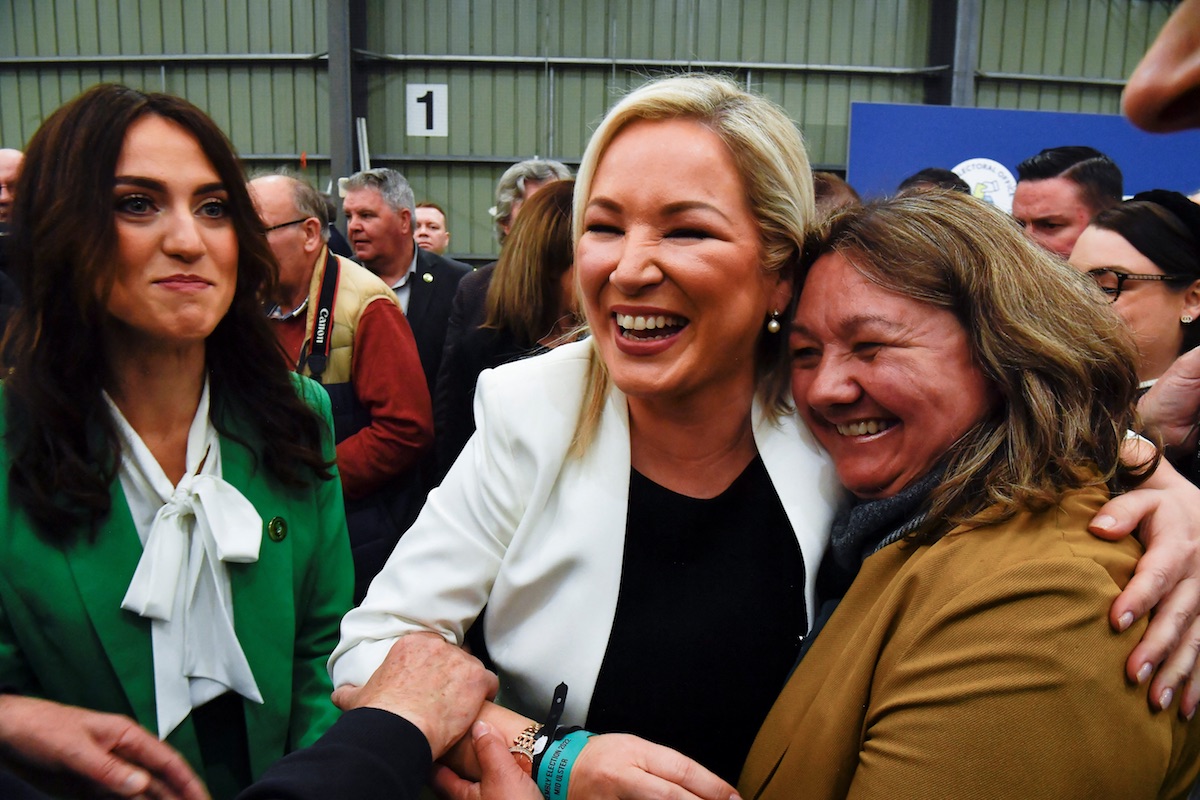
By Kevin Meaghar (for the Irish Post)
“The depiction of the council election results by parts of the media is distorted,” intoned the staunchly unionist Belfast News Letter a few days after the vote in Northern Ireland.
“There has been great excitement about the success of Sinn Féin as if it represents some sort of watershed,” it added.
Move along, nothing to see.
But there is something to see, that’s the problem for unionists.
This was a watershed election.
In Belfast, once the citadel of unionist power, nationalists – Sinn Féin and the SDLP – now lead the unionist parties by 27-17.
Places like Lisburn, Antrim, Newtonabbey and east Derry – unionist heartlands - now have Sinn Féin councillors.
But there was a much bigger significance.
For the first time - ever - the combined number of votes for pro-Irish unity parties – Sinn Féin, the SDLP, Aontú and People Before Profit – beat the combined pro-UK parties: the DUP, Ulster Unionists and Traditional Unionist Voice: 41.5 per cent versus 38.1 per cent.
Nothing will ever be the same again in Northern Ireland.
At the very least, Sinn Féin, with superior political organising, can turn out its voters, that much is clear.
But that’s only half the story.
The electoral waters are lapping at the feet of unionists, but they refuse to acknowledge political reality.
Well, they pretend to.
They can see what’s happening as clearly as anyone else. Northern Ireland is edging towards the exit door.
At risk, in the next few years, of being voted out of existence by its own people.
That’s why the DUP’s Ian Paisley has a Bill in Parliament to try and retrofit the Good Friday Agreement, requiring a ‘supermajority’ for any vote on Irish unity.
Instead of a simple 50 per cent+1 to enact constitutional change, he wants a requirement of 60 per cent.
It won’t get anywhere.
Not least because it would require a complete rewriting of the agreement – a total non-starter.
But the essential truth is that Downing Street just isn’t interested.
Frankly, there will be an audible sigh of relief in Westminster if it looks like Northern Ireland will be voted out of existence in the next few years.
No, the local election results mean we are now in a new phase.
It’s no longer a question of might there be a united Ireland, at some stage, far, far down the road.
It’s now a question of when, not if.
But this election might also have been the first when the changing demographic make-up of Northern Ireland – lots more younger Catholics and older Protestants – has made itself known.
Sinn Féin was up 7.7 per cent. Even if the party cannibalised the electoral support of the SDLP and even the Greens, it still doesn’t account for such a dramatic surge in support.
But put all that to one side.
Northern Ireland will keep changing, regardless of a border poll on Irish unity.
A younger, more vibrant and optimistic Catholic-nationalist community will never again settle for second-class status, like their parents and grandparents were expected to.
You only need to stroll along the Falls Road in West Belfast to see that.
It is unmistakably Irish.
As, increasingly, is the rest of Northern Ireland.
There is a casual self-confidence to Northern nationalists these days.
The former Labour MP, Kate Hoey – now a hardline Brexiteer and DUP, well, dupe — complained a few months ago that the professional class in Northern Ireland is now “dominated by those of a nationalist persuasion”.
It was a disgraceful sentiment, ignoring the fact that Catholic-nationalists have worked hard for what they have.
Especially as they faced so many unfair advantages, the receiving end of unionists’ abuse of power for decades.
The plain fact of the matter is that, whether there is a united Ireland anytime soon, Northern Ireland is becoming more Irish by the day.
At the same time, Unionism is declining, not just in numbers – evidenced in this election – but culturally too.
Here’s an example.
In May 2022, after two years of lockdown, 25,000 members of the Loyal Orders marched to commemorate the late Queen’s Jubilee.
Another 60,000 were said to line the route from Stormont to Belfast City Centre.
This, after a two-year, Covid-inspired hiatus.
It was a brilliant opportunity to show the strength of support for the Union, on behalf of the unionist community.
The News Letter said 125,000 – marchers and watchers – took part.
Is that a lot of people? Well, let me put it this way.
A day later, in the nearest English city to Belfast, another street procession took place. Liverpool Football Club, having lost to Real Madrid in the UEFA Champions League, were welcomed home by an estimated 500,000 fans.
This in a place where footballing rivalries mean that half the city’s is actively disinterested in the Red’s fortunes. Four times more people turned out: Let that be a benchmark.
Unionists simply don’t have the numbers to dictate terms any longer.
The simple fact of the matter is that every election from this point onwards will be a proxy for the eventual referendum on Irish unity.
* Kevin Meagher is author of ‘A United Ireland: Why Unification is Inevitable and How it Will Come About,’ and ‘What A Bloody Awful Country: Northern Ireland’s Century of Division
![[Irish Republican News]](https://republican-news.org/graphics/title_gifs/rn.gif)
![[Irish Republican News]](https://republican-news.org/graphics/title_gifs/harp.gif)

